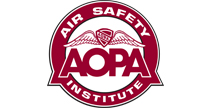Too much information
(IAD03FA005)
 Personal handheld computers (PDAs) with GPS capability have become a staple in many flight bags in recent years. Although it is tempting for pilots to use these as their primary navigation source, it is NOT legal nor the safest way to fly. An instrument rated private pilot flying a Cessna 172 proved this point on October 15, 2002 when he was killed during an attempted GPS approach to Mount Sterling-Montgomery County Airport in Mount Sterling, Kentucky.
Personal handheld computers (PDAs) with GPS capability have become a staple in many flight bags in recent years. Although it is tempting for pilots to use these as their primary navigation source, it is NOT legal nor the safest way to fly. An instrument rated private pilot flying a Cessna 172 proved this point on October 15, 2002 when he was killed during an attempted GPS approach to Mount Sterling-Montgomery County Airport in Mount Sterling, Kentucky.
The evening before the accident, the pilot completed a checkout in the same Cessna 172. According to the instructor, during the checkout the pilot completed multiple IFR tasks successfully, even describing the pilot as "very competent." During part of the checkout, the pilot started to use a PDA with a GPS antenna, but turned it off at the request of the instructor. The Cessna 172 they were flying was certified for IFR flight, but did not have a GPS receiver installed.
Related Links
GPS for VFR Operations online course
GPS for IFR Operations online course
VFR GPS Guide: Garmin 430/530 online course
On the day of the accident, as the pilot approached Mount Sterling he requested the GPS approach to runway 21 (the aircraft didn't have an approved IFR GPS). The approach was approved, and he was advised of the local altimeter setting, but did not acknowledge the transmission. The GPS approach to runway 21 at Mount Sterling consists of four fixes: FELPO, the intermediate approach fix; ISFUR, the final approach fix; an unnamed step down fix located 2.3 nautical miles from the missed approach point; and runway 21, the missed approach point.
Radar data indicated that the airplane passed abeam FELPO 1 nautical mile right of course, at an altitude of 2,700 feet. Abeam ISFUR (the final approach fix) the airplane was 1/2 mile right of course at 2,300 feet. The charted minimum descent altitude between FELPO and ISFUR was 2,600 feet msl (1,800 feet agl). The airplane impacted a tower left of the approach course centerline, at an elevation of 1,350 feet.
Weather at the time of the accident included overcast ceilings at 500 feet agl, 3 statute miles visibility, temperature 58 degrees, and dew point 54 degrees. The pilot had over 478 hours of total time, with 106 hours of instrument experience.
The NTSB determined the cause of this accident to be the failure of the pilot to follow the published instrument approach procedure, which resulted in an early descent into an antenna tower.
The maker of the software on the PDA had posted a warning on its website which stated "The system is not tested or approved by the FAA or any governmental agency and should not be used as a primary flight instrument."
Handheld GPS units are a wonderful resource to have in a cockpit. Having a moving map display will significantly improve a pilots' situational awareness. However, currently none of the handheld units on the market can be used for primary navigation in IFR conditions. If you own a handheld GPS unit, it is imperative that you use it according to the manufacturer's recommendations.